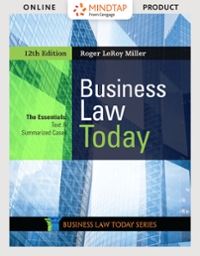**COOKERY SUBJECT** OPEN THE PICTURE TO SEE MY QUESTION. ANSWER IT AS SOON AS POSSIBLE PLEASE.
29. Complete the analogy: If 1 teaspoon is 5 ml, what is 5 tsp? a 10 b. 15 0. 20 d. 25 30. Complete the analogy: If . inch is 5 mm, how many mm are there in 1 inch? a. 10 b. 15 c. 20 d. 25 31. Also called commercial math or consumer math with emphasis on computational skills and its practical application for business. a. Basic Math b. Business Math c. Marketing d. Trigonometry 32. How do we compute for the Percentage Markup based on cost? a Divide the peso markup by the cost. b. Divide peso markup by the selling price c. Subtract the peso markup by the cost. d. Subtract peso markup by the selling price, 33. Finances needed to sustain a business. n. Capital b. Goods c. Labor d. Profit 34. Solve for the Peso Markup of an electric fan that costs 1,500 and is sold for 1, 600. a. 100 b. 200 c. 300 d. 400 35. Solve for the Peso Markup of a refrigerator that costs 21,499 and is sold for 22,300. a. 800 b. 801 c. 802 d. 803 36. Solve for the Peso Markup of a ballpen that costs 10.00 and is sold for 15.00. n. 5 b. 10 c. 12 d. 14 37. Given the data: Selling price: 50.00; Buying price 35.00. Calculate percent markup based on cost. n. 0.44% b. 0.45% c. 0.46% d. 0.47% 38. Given the data: Selling price: 2400.00; Buying price 2000,00. Calculate percent markup based on cost. a. 0.2% b. 0.3% c. 0.4% d. 0,5% 39. Given the data: Selling price: 3599.00; Buying price 3100.00. Calculate percent markup based on cost. a. 0.13% b. 0,14% C. 0.15% d. 0.16% 40. Given the data: Selling price: 9999.00; Buying price 8889.00. Calculate percent markup based on cost a 0.10% b. 0.11% c. 0. 12% d. 0.13% 41. The following are reasons why OHS is practiced in the kitchen, EXCEPT a. To keep oneself clean b. To keep the food clean and safe c. To keep the workplace clean d. To keep tools and equipment unused 42. Hazard brought by poor posture when working long periods of standing, bending, pushing, lifting. that can cause body stress, muscle pains, numbness of hands and feet and other parts of the body a. Biological Hazard b. Chemical Hazard c. Ergonomic Hazard d. Physical Hazard 43. Hazard brought by use of chemicals such as disinfectants for cleaning equipment, and floorings, fumes and smoke from cooking a. Biological Hazard b. Chemical Hazard c. Ergonomic Hazard d. Physical Hazard 44. The term "PPE" stands for? n. Personal Proper Equipment b. Personal Protective Equipment c. Private Property Equipment d. Professional Protective Equipment 45. This type of Hazard is brought by unhealthy working conditions such as poor lighting, poor ventilation, insufficient facilities, inefficient or faulty machine or equipment and improper work practices. a. Biological Hazard b. Chemical Hazard c. Ergonomic Hazard d. Physical Hazard 46. This is brought by too much stress from work may cause mental and emotional strains, anxieties, depression- losing focus on one's work and others. a. Biological Hazard b. Chemical Hazard c. Ergonomic Hazard d. Psychological Hazard 47. The following are tips on how to keep yourself clean, EXCEPT a. Always wear PPE while at work b. Keep finger nails short and clean c. Put all your accessories before working. d. Wash hands thoroughly 48. The anticipation, recognition, evaluation, control and prevention of hazards from work that may result in injury, illness or may affect the wellbeing of workers. b. Observational Health and Safety a. Hazard c. Occupational Health and Safety d. Rules and Regulations 49. To keep our workplace clean we must a. Eat, smoke and spit in the workplace b. Follow the Japanese philosophy of good housekeeping c. Keep the surrounding area dirty and disorganized d. Sit on equipment and worktables 50. What does "FIFO" stands for? b. First in, final out a. Final in, first out d. First in, first out First in, first on







